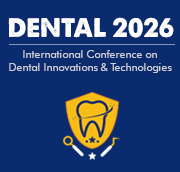Title : Extrusion of sealer in periapical area- good, bad or ugly: An evidence based study
Abstract:
This study includes three different kind of sealers: Grossman (ZOE based) Sealpex (resin based) & Sealapex (calcium hydroxide based) which were intentionally extruded in the periapical area using pumping action of Gutta Percha and observed for a period of 6 months for their rate of resorption and periapical healing. Zinc-oxide-eugenol based sealers were removed significantly faster than resin based and calcium hydroxide based sealers due to its high-solubility caused by the continuous release of free eugenol, which is hydrosoluble. This continuous leaching out of eugenol by water can result in the progressive decomposition of zinc eugenolate and disintegration of sealer. Resin sealers are known for their low solubility and adherence to other materials. They are favoured because they can establish monoblocks between the intra-canal filling and the intra-radicular dentine, and also because of their ability to infiltrate into dentinal tubules. Resin sealers has shown lowest rate of resorption compared to other sealers which can be attributed to epoxy resin, the major component of resin based sealers. Calcium-hydroxide-based-sealers showed faster periapical healing as compared to the other two, as they maintain a high pH (≥12.5). It showed maximum mineralized tissue deposition by inducing a pronounced differentiation of macrophages and giant cells. Along with this, significant bone formation, cemental deposition, periodontal fibre organization and apical closure have been noticed. The results of this study concludes that calcium hydroxide based sealers are better agents in healing periapical lesions. In cases of mobility of tooth, root canal treatment using calcium hydroxide based sealers can result in faster bone formation hence reduce mobility thereby returning the functional status of the teeth. This has been a controversial topic in the past discouraging the extrusion of sealer in periapical areas and suggesting the confinement of sealers within the root canal system. This paper contrast to the existing literature suggesting the extruding of sealer to seal the apical intricacies, accessory canals and apical deltas hence preventing failure. Various calcium-hydroxide based sealers can be included as part of practise by faculties, researchers & students in their dental practice.



